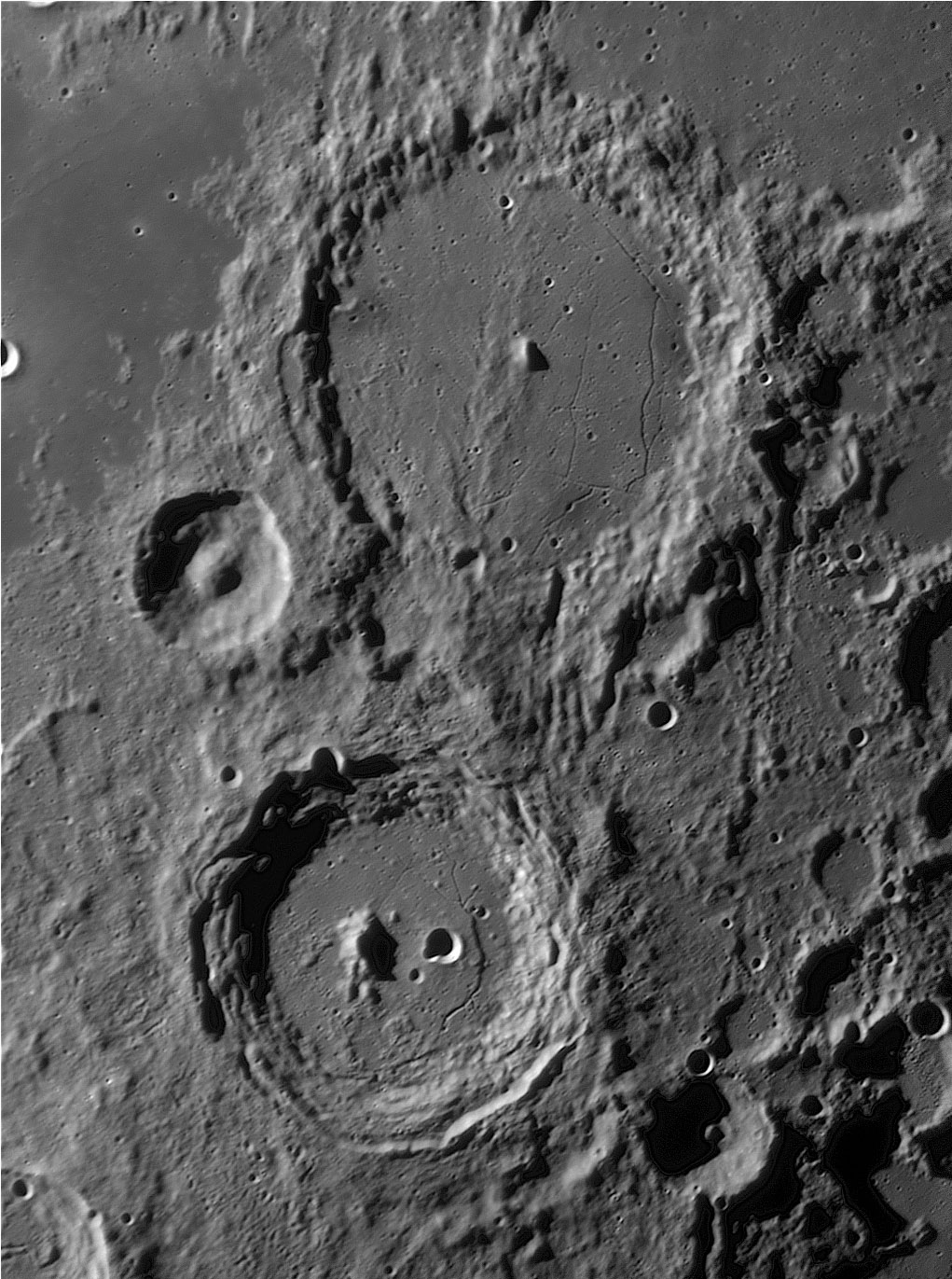|
|
| (2 intermediate revisions by the same user not shown) |
| Line 1: |
Line 1: |
| | __NOTOC__ | | __NOTOC__ |
| | =Just Another Glorious Image= | | =Just Another Glorious Image= |
| | + | <!-- Start of content --> |
| | <div class="post" id="post-555"> | | <div class="post" id="post-555"> |
| | | | |
| Line 6: |
Line 7: |
| | <p>[[File:Alphonsus-Arzachel-09-14-06-53map-s371.jpg|Alphonsus-Arzachel-09-14-06-53map-s371.jpg]]<br /> | | <p>[[File:Alphonsus-Arzachel-09-14-06-53map-s371.jpg|Alphonsus-Arzachel-09-14-06-53map-s371.jpg]]<br /> |
| | <em>image by [mailto:starman2@charter.net Wes Higgins], Tecumseh, Oklahoma</em></p> | | <em>image by [mailto:starman2@charter.net Wes Higgins], Tecumseh, Oklahoma</em></p> |
| − | <p>I am on travel and was not planning to write a new LPOD and then this evening I saw Wes’ new image and couldn’t help myself. Gosh, this is good! Comparison with the commonly used Lunar & Planetary Institution’s digitized Lunar Orbiter [[iv_108_h2.jpg|image]] of nearly the same area demonstrates that Wes’ image shows craters not visible of that orbital view and the rilles and other features are more sharply displayed - and there are no lines from the Orbiter’s photo-reconstruction process! Both Alphonsus and Arzachel are floor-fractured craters, and Alphonsus is the easiest place on the Moon to see volcanic dark halo craters. The Imbrium Basin impact-forming event created a number of radial crater chains that are well seen east of Alphonsus as well as the three gougely like short chains just north of Arzachel. This is a glorious image - look at each square centimeter and try to understand its history!</p> | + | <p>I am on travel and was not planning to write a new LPOD and then this evening I saw Wes’ new image and couldn’t help myself. Gosh, this is good! Comparison with the commonly used Lunar & Planetary Institution’s digitized Lunar Orbiter [http://www.lpi.usra.edu/resources/lunar_orbiter/images/img/iv_108_h2.jpg image] of nearly the same area demonstrates that Wes’ image shows craters not visible of that orbital view and the rilles and other features are more sharply displayed - and there are no lines from the Orbiter’s photo-reconstruction process! Both Alphonsus and Arzachel are floor-fractured craters, and Alphonsus is the easiest place on the Moon to see volcanic dark halo craters. The Imbrium Basin impact-forming event created a number of radial crater chains that are well seen east of Alphonsus as well as the three gougely like short chains just north of Arzachel. This is a glorious image - look at each square centimeter and try to understand its history!</p> |
| | <p>[mailto:tychocrater@yahoo.com Chuck Wood]</p> | | <p>[mailto:tychocrater@yahoo.com Chuck Wood]</p> |
| | <p><strong>Technical Details:</strong><br /> | | <p><strong>Technical Details:</strong><br /> |
| Line 15: |
Line 16: |
| | <p><b>Yesterday's LPOD:</b> [[September 15, 2006|Not Quite a Bulls-Eye]] </p> | | <p><b>Yesterday's LPOD:</b> [[September 15, 2006|Not Quite a Bulls-Eye]] </p> |
| | <p><b>Tomorrow's LPOD:</b> [[September 17, 2006|Serenitatis Diameter Sequence]] </p> | | <p><b>Tomorrow's LPOD:</b> [[September 17, 2006|Serenitatis Diameter Sequence]] </p> |
| − | <!-- Removed reference to store page --> | + | <!-- Removed reference to store page 2 --> |
| | </div> | | </div> |
| − | ----
| + | <!-- End of content --> |
| − | ===COMMENTS?===
| + | {{wiki/ArticleFooter}} |
| − | Register, and click on the <b>Discussion</b> tab at the top of the page.
| |
| − | <hr>
| |
| − | <!-- | |
| − | You can support LPOD when you buy any book from Amazon thru [[Support_ LPOD|LPOD]]!
| |
| − | -->
| |
| − | <span style="font-size:88%">
| |
| − | <center>
| |
| − | Contributions to http://www2.lpod.org/ are licensed under a Creative Commons Attribution No-Derivative-Works Non-Commercial 3.0 License. [http://www.creativecommons.org/licenses/by-nc-nd/3.0 http://www.wikispaces.com/i/creativecommons/by-nc-nd_3.0_80x15.png]<br>
| |
| − | </center>
| |
| − | </span>
| |




